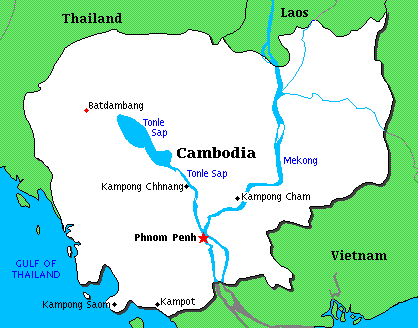
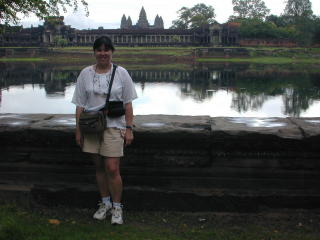
3 days in Cambodia, May 20-22
One of the great wonders of the world is the Angkor complex built by the Khmer kings between the 9th and 12th centuries . Most famous is Angkor Wat but there are many temples and temples cities in the area which are just as amazing. The closest town is Siem Reap and there are now direct flights from Bangkok. Soon there will also be direct flights from other major cities which may bring so many tourists that the area is somewhat spoiled. Many modern hotels are sprouting everywhere. I commented on a shanty town alongside a construction site and my guide told me that a corrupt minister had sold the land which villagers were living on to a developer and the police evicted everyone one day.
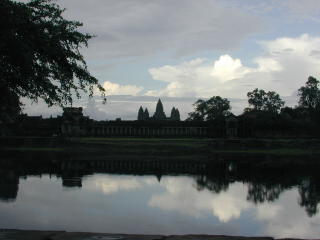
Angkor Wat is surrounded by a moat and wall. It was built as a city for the king and his court and as his tomb.
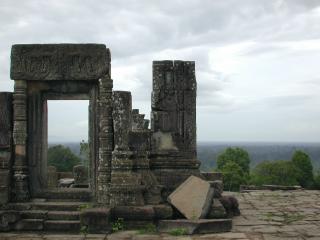
It was abandoned in the 12th century when the capital was moved to Phnom Penh. Angkor is so close to Thailand, the Thais kept invading and winning. The jungle reclaimed the temples which are about 10km outside of the city and they lay undisturbed until a Frenchman came across them in 1923. French archeologists set about reclaiming them from the jungle.
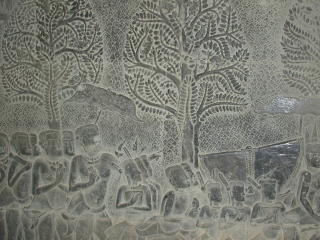
The carvings are still in relatively good condition although there is much controversy about how to clean and preserve them
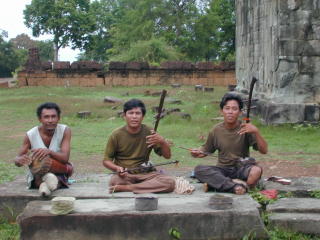
The French occupied Cambodia for 90 years. They set up schools, roads, trade and restored the temples. During the war which resulted in 4 brutal years of Khmer Rouge rule, the infrastructure was completely destroyed. The communist Khmer Rouge kicked everyone out of the cities. They told them to go to the country and become an agrarian society. If the people did not leave, they were shot. Intellectuals were tortured and killed – sometimes even wearing reading glasses was enough to sentence someone to death. In 1993, the policy loosened somewhat and international agencies came in to help clean up the minefields. It was permitted to learn English again. These traditional instrument musicians lost their limbs in mine explosions. There are still several agencies trying to clear mines from Cambodia.
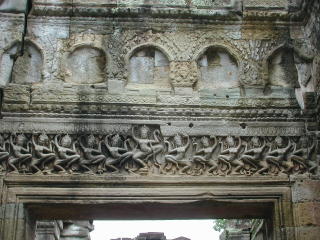
In the king’s court, it was important for concubines to be graceful dancers. The dancers were called Apsaras. This room was used to train young girls in the art.
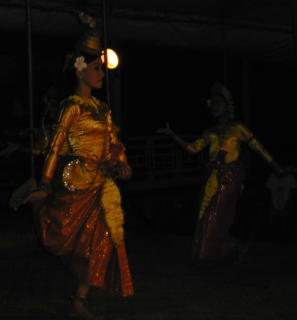
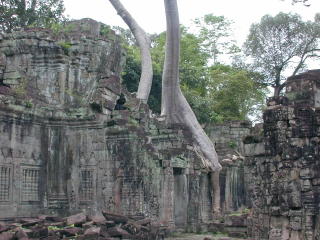
Ta Prom is one of the temples which was left unrestored by the French to show how the jungle had taken over.
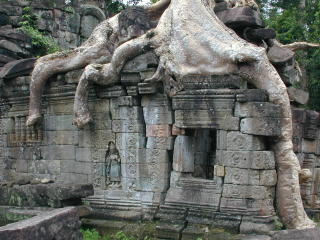
These Spont trees can survive on the stone. They wrap around the walls and insinuate themselves until they become an integral part of the structure. Now, if the trees die, the parts they were holding together would collapse.
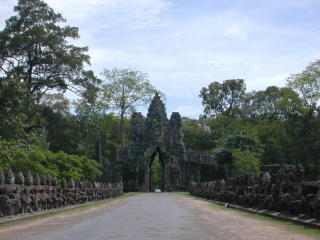
One of my favorite temples was Angkor Thom. It has an impressive causeway entrance over a moat with head of gods and demons on each side.
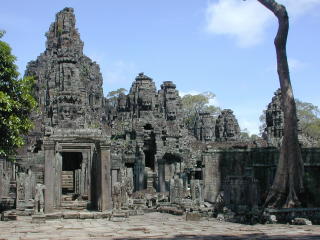
The main temple inside has 54 towers with 200 faces. It is a stunning sight which reminded me of the first time I saw Luxor Temple in Egypt.
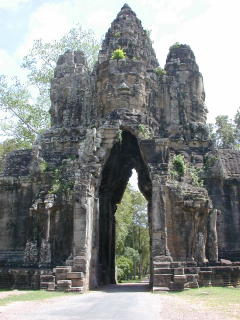
There are 4 main gates to Angkor Thom each with a 4-faced god and elephant heads.
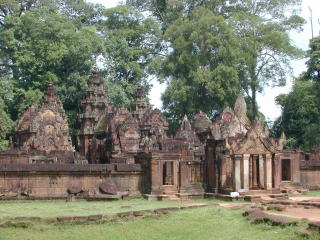
Banteay Srei about 35km outside of Siem Reap is the temple dedicated to the women. It has the most delicate and best preserved carvings of all the temples. It is believed that the pink and yellow limestone was carved by women.
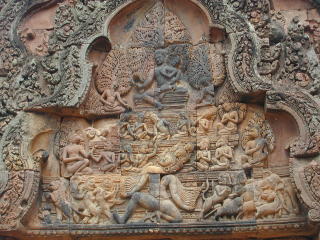
This relief at Banteay Srei shows a scene from the Ramayana story. At the top, the bad king is stealing the wife of the good king. Below, the lions are running away from an evil demon with 10 heads and 20 arms. In the middle, the monkey king is trying to help.
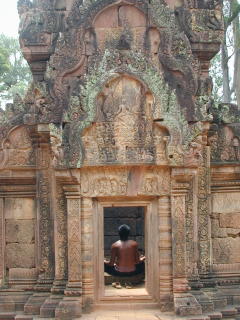
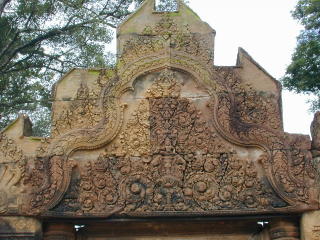
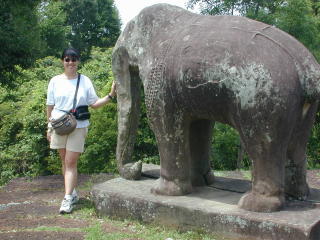
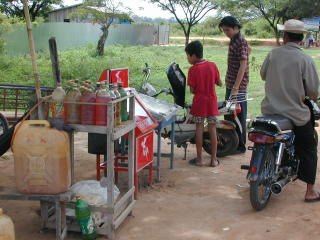
Cambodia’s infrastructure is slowly being rebuilt. The roads even when paved are in terrible condition. There are street lights on the main road but they are only turned on for festivals. The electricity is needed by all the new hotels being built. This is a local gas station in Siem Reap
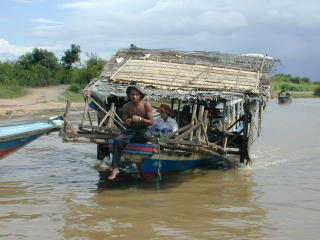
Rainy season is about to arrive. Many people will move their “houses” from the riverside where they live from fishing to the mountain. The lake will triple in size during the wet season. Everyone was just packing as we passed. Some put their houses on the back of trucks – others hitched a lift from a boat. In the back are all the worldly possessions of this family.
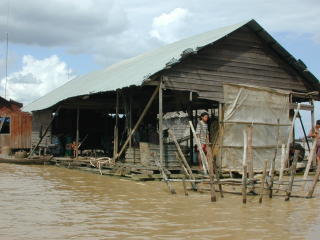
On the lake itself is a floating village. We stopped at a mini “Noah’s Ark”. They had a catfish farm, storks, pelicans, an enormous python, 2 baby monkeys and numerous children.
There is a fabulous book called The River of Time by Jon Swain who is a journalist and was in Phnom Penh when it fell to the Khmer Rouge. Cambodia’s recent history is brutal and depressing. My guide told me how his family was driven out of Siem Reap to the countryside in 1975. His parents were imprisoned and his father starved to death in prison. I was surprised and saddened to hear him also say that his favorite movies are the violent ones. Fighting, guns and death still thrill him. Perhaps at 29, he is too young to remember the worst atrocities or perhaps he is simply hardened to violence. He seemed like a nice person. He put off marriage so that he could continue to support his mother and 2 younger siblings.